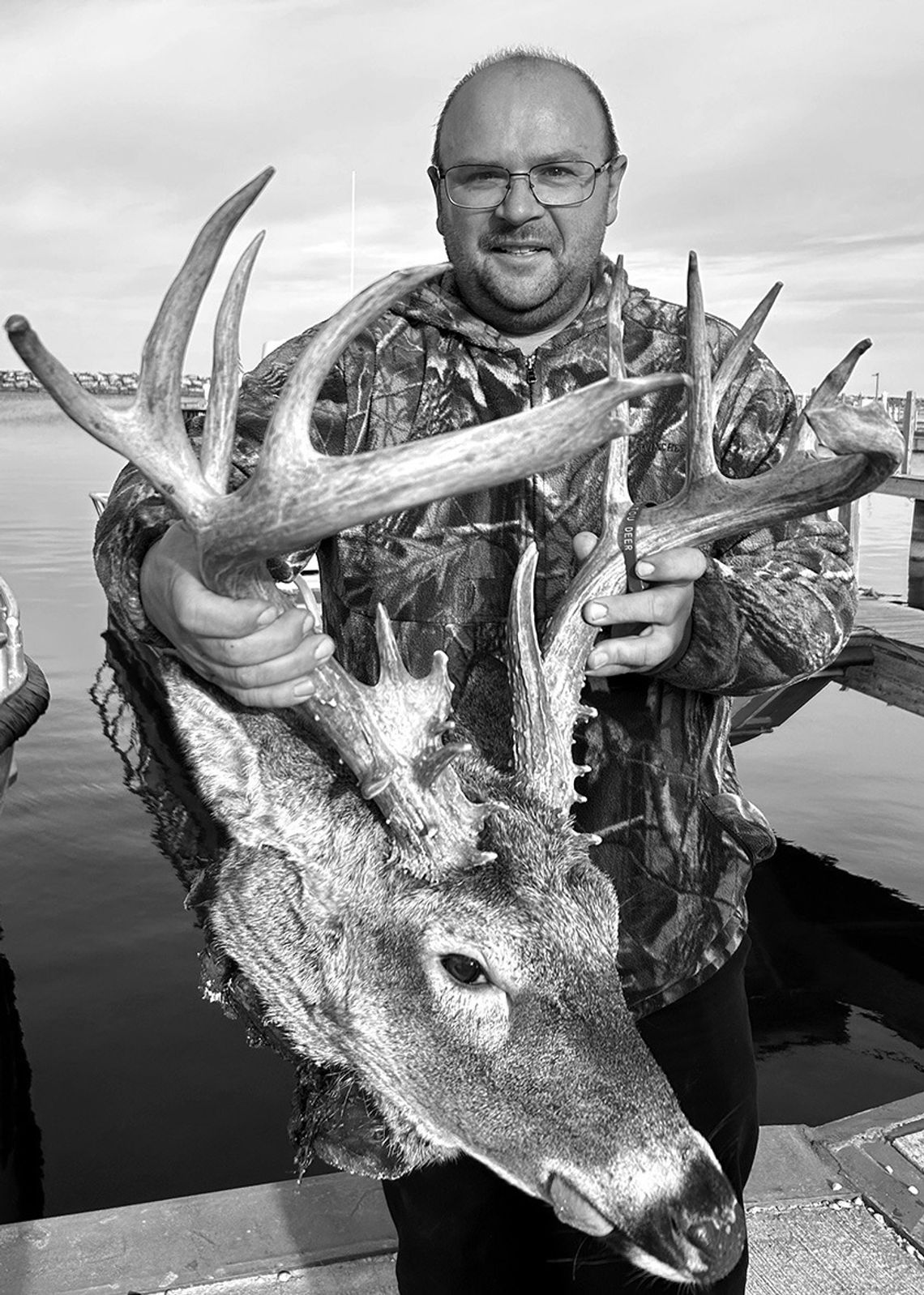No matter how measured — from good behavior to bountiful harvests to the 21 points on perhaps the biggest island buck ever shot — the eight-day North Manitou deer hunt that ended Nov. 3 was one of the most successful on record.
“It was really cool,” said Dan Plamondon, owner of Cherry. Bend Grocery Store and an Elmwood Township resident. “We love people and we love our store and the business. But when you entertain a couple hundred customers every day, then you get out there and you don’t see anyone for a week, that’s good, too.”
Plamondon has been enjoying the North Manitou wilderness hunt experience since 1991. And he’s usually successful, having taken two large bucks and a doe off the island in 2023. Even though he didn’t bag a deer last week, he returned to the mainland refreshed and satisfied after camping for a week by himself in a small tent.



